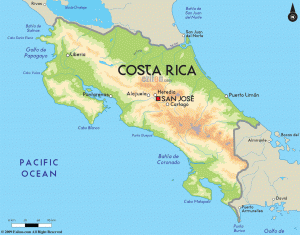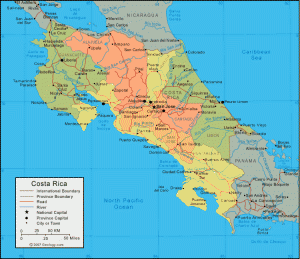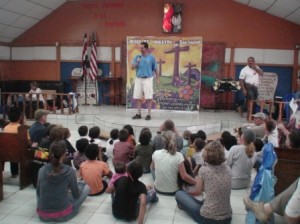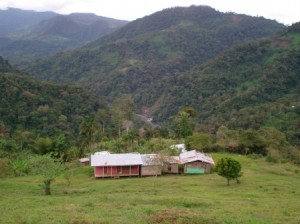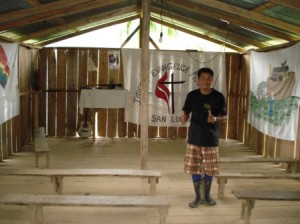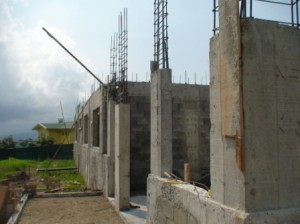The Ray Zirkel Family
In 1995, we were invited by Dr. Luis Palomo, Bishop, to minister with the Methodist Church in Costa Rica. Ray is an ordained elder in the United Methodist Church and serves as a professor at the Evangelical Methodist Seminary. In addition, Ray is a member of the Board of Directors of the Methodist High School and Elementary School, and he helps to plant and develop local congregations. Lidia is the director of the Methodist Children’s Home. The Zirkel’s host approximately 25 short-term mission teams each year who work on a variety of church related ministries.
Ray
Ray is a native Texan. He attended Southern Methodist University earning a B.A. in both History and Latin American Studies, a minor in Spanish and a Texas teaching certificate. While attending SMU, Ray was privileged to assume leadership positions within two Christian ministries on campus: Campus Crusade for Christ and the university Sunday School Class at Highland Park UMC. Through his work with these two groups and the continual development of his personal relationship with Christ, he sensed the Lord leading him into full time Christian ministry and mission work. He began his ministry in 1989 as a missionary to Guatemala, teaching Spanish at a mission school. In 1990, he returned to the USA to attend Seminary at Asbury Theological Seminary graduating in 1994 with a Masters of Divinity degree. It was while he was attending seminary that he met Dr. Palomo and was invited to teach at the Methodist Seminary immediately following his graduation.
Lidia
Lidia is a native Alabamian. She attended the University of Alabama at Birmingham earning a B.A. in English with a minor in Marketing. While attending UAB, Lidia worked full time in financial marketing and advertising. It was while Lidia was attending UAB that she became a Christian and felt the Lord leading her into full time ministry. Lidia also graduated from Asbury Theological Seminary with a Masters of Divinity degree in 1994. During Lidia’s first year in Costa Rica, she attended language school in San José.
Our Personal Statement of Faith
We would first and foremost affirm the historic statements of our Christian heritage as found in both the Apostles and Nicene creeds. In addition to these summaries of belief, we would add a particular emphasis to the ongoing task of all Christians to fulfill our Lord’s Great Commission to proclaim Christ to all nations so that all may receive Him as their personal Lord and Savior and become mature disciples in the faith; ever increasing in their love for God and their neighbor through lives of personal and social holiness.
Only a few months later, in October of 1917, the first persons arrived in Costa Rica to begin directing the new Methodist mission. They included Bishop George Amos Miller from the U.S. and Rev. Eduardo Zapata from Mexico. In 1919 Bishop Miller purchased a strategically located building in the center of San Jose. This former theater was later remodeled, and converted into the first Methodist sanctuary in country and given the name of “El Redentor.” (“The Redeemer” Methodist Church)
During the following years, the Methodist Church expanded throughout many parts of the country with properties purchased in the cities of Alajuela, (1920) San Ramon, and Barrio Mexico. (1924). In keeping with the advance of Methodism in other regions of the world, only four years after initiating the Methodist work in Costa Rica, a school was formed in the ‘Redentor” Methodist Church. The “Colegio Metodista” as this institution came to be known, had a difficult beginning and eventually had to be closed for a period during the 1940’s. Then in 1949, it was reopened under the direction of the Methodist Missionary, Rev. Powell Royster. Shortly thereafter, the Colegio received full accreditation from the Costa Rican Ministry of Education and grew to have a positive impact in the preparation of young men and women throughout Costa Rica.
Though overall growth in the church was rather slow, by 1968 the Methodist work in Costa Rica included twenty organized churches and a membership of nearly 900 persons. Besides local congregations and the fore mentioned Colegio Metodista, other institutions which were part of the church’s ministry included the Centro Metodista in Alajuela (Education/Retreat Center), the Centro Rural in San Carlos (Farm and Camping Center) and the Libreria Metodista. (Christian Bookstore)
The year 1968 was especially significant in the life of the church as it marked the time when permission was granted to Methodist churches throughout Latin America to move towards becoming autonomous national churches. Though it would take five years to elaborate a plan for the Costa Rican Methodist church’s autonomy, on February 13, 1973 in the company of Californian Bishop Charles Golden, Bishop Sante Barbieri from South America and two representatives from the General Board of Global Ministries, the official declaration of autonomy was granted to the Evangelical Methodist Church of Costa Rica. During the celebration, leaders of the new church were consecrated and Rev. Luis Fernando Palomo was elected president.
During the 1993 annual conference session Bishop Palomo was elected once again as Bishop of the church, a position to which he has repeatedly been re-elected every four years to the present day.
Since the mid 1990’s, the Evangelical Methodist Church has experienced a continued period of growth in a number of different areas. Due to the ongoing work of the Methodist Seminary, the church has been able to prepare and equip a new generation of pastors and lay leaders with a passion for sharing the Good News of the Gospel and planting new churches. At the present time (2011), the Methodist Church has over 110 congregations (membership approximately 12,000 persons) stretching from Nicaragua to Panama and from the Caribbean coast to the Pacific. Much of this growth has been made possible through partnerships with Methodists from the U.S. particularly through the Volunteers in Mission Program.
During this same period, the work of the church has not been limited exclusively to the planting of new churches but has expanded its focus in at least two other major areas. First, the church is more actively involved in serving those in need through feeding centers, day care centers and social assistance than ever before. Hundreds of children are being fed and basic needs for clothing are being met by Methodists who know that in “doing this to one of the least of these” they are ministering to Christ himself. Secondly, since 2000, the Methodist Church of Costa Rica has also grown in the area of education. Not only does the Colegio Metodista (Methodist Elementary and High School) now have over 1,200 students on its San Jose campus, but a second Methodist school has been started in the city of San Carlos. In addition, the Methodist University of Costa Rica was founded in 2001 and is accredited to offer degrees in six distinct disciplines.
In 2006, through means which we can only attribute to God’s grace, we were able to purchase a small farm located in Patio de Agua, Coronado. The property has lovely rolling hills, several large flat areas, a small river, and access to public roads, water and utilities. There is one home currently on the property which has been renovated and is being used as the administration building as well as a home for the grounds caretaker. Our vision for this farm is to build five homes, a multi-purpose building, an open air chapel, a soccer field, basketball court, and playground.
School
